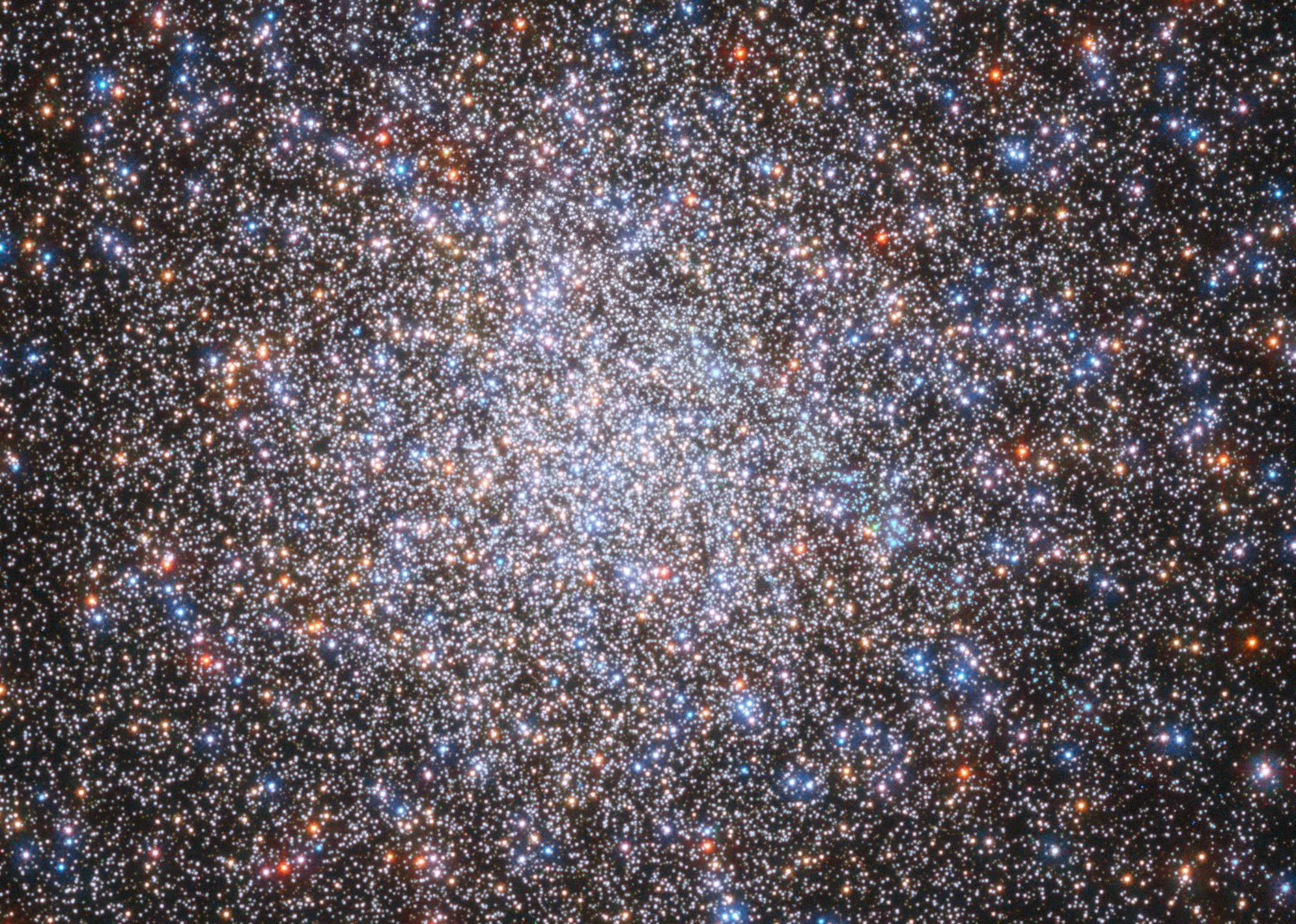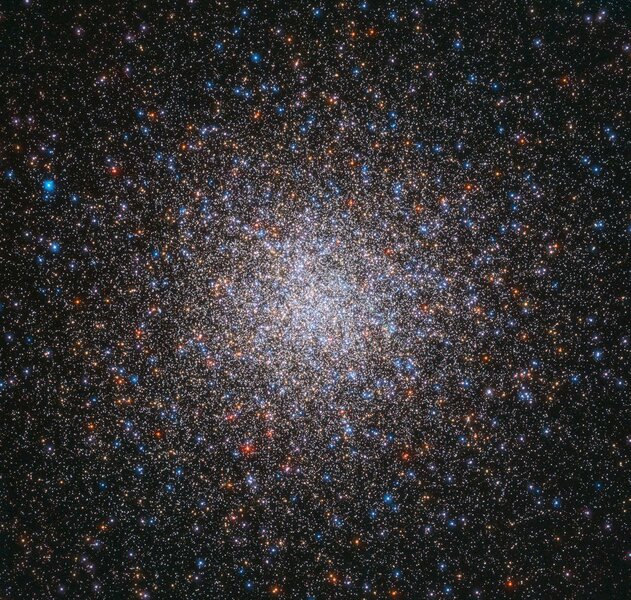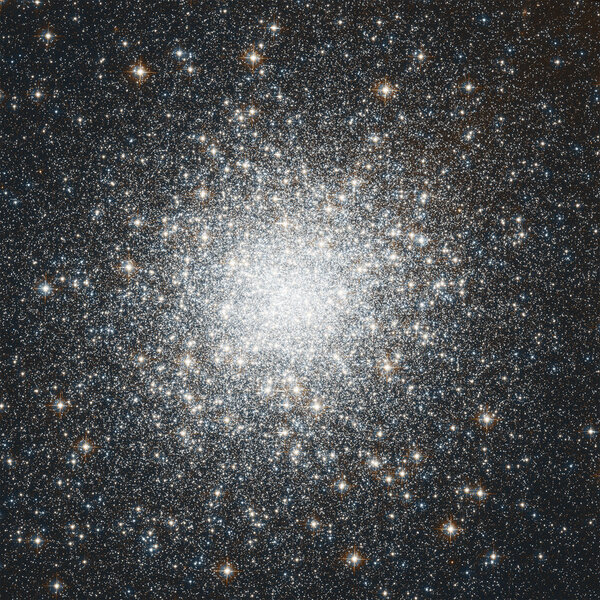Create a free profile to get unlimited access to exclusive videos, sweepstakes, and more!
Hubble's view of the globular cluster M2: It's full of (weird) stars

Globular clusters just keep coming up in my writing lately. In my defense, they’re really interesting objects. Dozens of light years across, they can contain hundreds of thousands of stars all held together by their mutual gravity, circling their center of gravity on orbits like bees around a hive. Many of them are incredibly old, among the first objects to form in the Universe, and some of them orbiting the Milky Way are as old as the galaxy itself.
We see them around close-by galaxies, around distant galaxies, look (unsuccessfully) for planets orbiting their stars, use them to learn about the history of the galaxy hosting them, and sometimes even accidentally discover nearby galaxies while looking at them. Some of them are puzzling,
Also, they’re just beautiful. Some more than others.
And that brings me to Messier 2, aka M2, aka NGC 7089, a globular that outglobules other globulars. Why? For one thing it’s huge, over 175 light years across, much larger than most globulars. It has a lot of stars in it, too, at least 150,000. But also because it’s scientifically interesting and also spectacularly gorgeous. I can prove the last part first:
Oh yeah. That’s Hubble’s view of M2, and as soon as I saw it I knew something about it was different. The star colors looked odd to me; I’m not used to seeing stars that are teal, for one thing. For another, I know M2 is old, very old, like 13 billion years old. That means most of the stars in it should be red; all the higher mass bluer stars should be dead, and even stars like the Sun are long gone after 13 billion years. The only stars that should be left are low-mass redder stars and the remnants of higher mass stars like white dwarfs. Those will look blue, but even so, the colors looked weird to me.
Then I looked up the filters used, and it made sense. What you see as blue here is actually ultraviolet light (a lot of it coming from those white dwarfs). What’s displayed as green is actually blue, and red is actually green! I know that’s a little confusing, but what it means is that the three filters used are significantly bluer than what we’re used to seeing in “natural light” images, skewing the star colors.
That also explains why it looks so different than an earlier Hubble image I’d seen before, which used filters that match our eyes more closely:
The stars look whiter here (fiddling with the color balance in creating this image explains some of that, I’d wager), but you can see that many are redder.
So why was the bluer image taken? Well, now we have to shift from art to science.
For a long time, it was thought that the stars in globular clusters were all born at the same time, in one giant spasm of stellar birth. That makes globulars ideal stellar astrophysical laboratories: If all the stars are the same age, then that removes a variable while studying them, making things easier. For example, in very general terms, how a star ages depends on its mass. A higher mass star runs through its nuclear fuel much more rapidly than a low-mass star, turning into a red giant before fading away (or exploding, if it’s high enough mass). We know how long that takes for a star of a given mass, so if you look at a globular cluster and examine the highest mass stars that are still normal stars, you can measure the age of the cluster! That’s pretty handy.
But it’s becoming clear this isn’t really the case. Careful examination of stars in globulars shows that in many cases there seems to be multiple populations of stars, as if there was one big starbirth event long ago, then another one (or more) more recently. That’s a big deal, since it messes with our measurements of their age! So astronomers are studying this in some detail, including in M2, where some of the stars looked like they compose a second population, separate from other stars.
It turns out that using the bluer filters on Hubble pick out stars like this very well, separating them by colors in a way that makes different star populations easier to spot. That’s why this image was made, to understand this. The astronomers who took the observations were able to make an interesting conclusion: This second population of stars in M2 is either younger than the other by 1 – 2 billion years, or else their chemical composition is different.
It turns out mass isn’t the only thing that determines how a star ages. The elements inside it have a big effect too. In this case, the second population may be the same age as the other stars but have more carbon, nitrogen, and oxygen in them. That changes their colors, making them look different.
Why would these stars have a different chemical content? That’s a little complicated, but it’s possible that early on in the globular cluster’s life, just after the first stars formed — but with other stars still forming — the highest mass ones blew very strong winds, or exploded, seeding the gas around them with heavier elements. The stars forming later would then have more of these elements than the earlier ones, and still only be a tad bit younger (maybe just millions of years, a fraction of the now 13-billion-year age). So nowadays they look the same age, but have very different compositions.
Oh, and one other thing: There has been some evidence recently about M2 that it might not even have started out as a globular cluster! Instead, it may have once been the core of a small dwarf galaxy that got eaten by the Milky Way. The stars farther from the center were stripped away and became part of our galaxy, and the denser (indigestible, I suppose you could say) core then kept on, becoming what we see as M2 today. Wow. Either way, it has a more complex history than we once supposed.
The <tl;dr> of all this is that globular clusters aren’t as simple as we used to think. Is anything? But in this case it means we have to be more careful when interpreting observations of them, and since we use them to understand galaxies better this has a ripple effect, changing (usually subtly) our conclusions about lots of other things, too.
But that’s science! Everything is connected in one way or another, so if you tug on one string here, something gets yanked over there. And given that we — you, me, the Earth, everything around you — exist because of stars long dead, we feel that tug as well. It’s worth figuring out what’s doing the pulling.

















